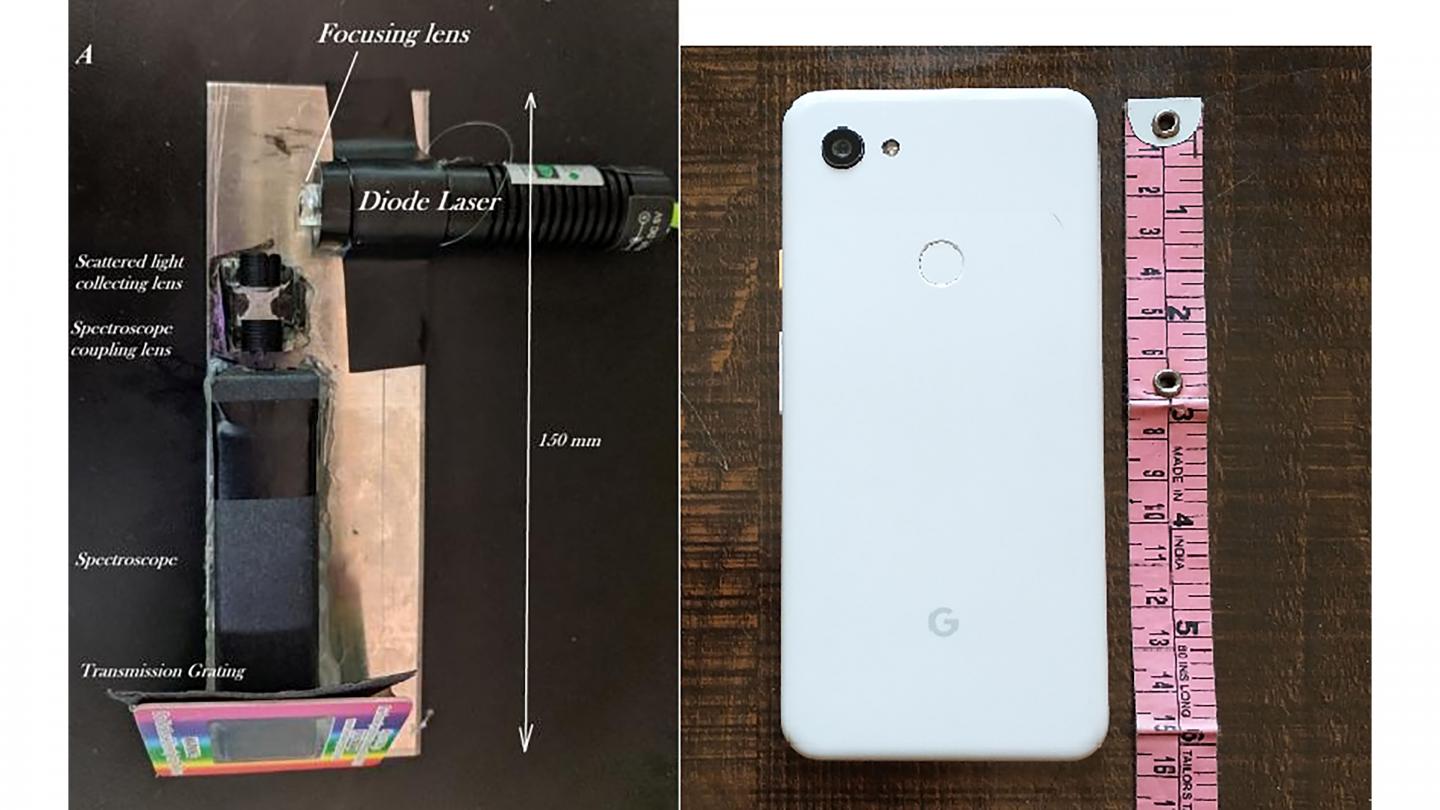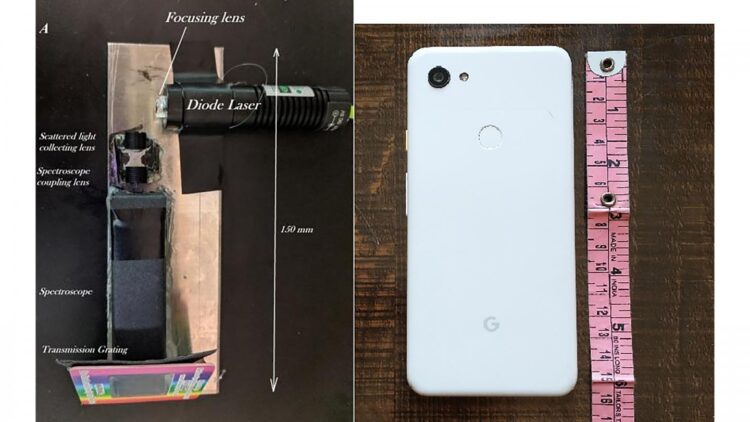With only $50 worth of components, an ordinary cellphone transforms into a sophisticated scientific instrument, capable of identifying chemicals, drugs, and pathogens

Credit: Peter Rentzepis
WASHINGTON, May 4, 2021 — Scientists from Texas A&M have developed an extension to an ordinary cellphone that turns it into an instrument capable of detecting chemicals, drugs, biological molecules, and pathogens. The advance is reported in Reviews of Scientific Instruments, by AIP Publishing.
Modern cellphones include high-quality cameras capable of detecting low levels of light and eliminating digital noise through software processing of the captured images. Recent work has taken advantage of this sensitivity to produce cellphone cameras that can be used as portable microscopes and heart rate detectors.
The current advance is based on two types of spectroscopy. One type, known as fluorescence spectroscopy, measures the fluorescent light emitted by a sample. Another, known as Raman spectroscopy, is useful for detecting molecules, such as DNA and RNA, that do not fluoresce or emit light at very low intensities. Both types were used to develop this cellphone detector.
The system includes an inexpensive diode laser as a light source, oriented at right angles to the line connecting the sample and the cellphone camera. The right-angle arrangement prevents back reflected light from entering the camera.
“In addition, this right-angle excitation geometry has the advantage of being easier to use for the analysis of samples where a bulk property is to be measured,” said author Peter Rentzepis.
The investigators studied a variety of samples using their constructed cellphone detector, including common solvents such as ethanol, acetone, isopropyl alcohol, and methanol. They recorded the Raman spectra of solid objects, including a carrot and a pellet of bacteria.
Carrots were chosen for this study because they contain the pigment carotene. The laser light used in their system has a wavelength that is easily absorbed by this orange pigment and by pigments in the bacteria.
The investigators compared the sensitivity of their system to the most sensitive industrial Raman spectrometers available. The ratio of signal to noise for the commercial instrument was about 10 times higher than the cellphone system.
The sensitivity of the cellphone detector could, however, be doubled by using a single RGB channel for analysis. The system has a rather limited dynamic range, but the investigators note that this problem can be easily overcome through several HDR, or High Dynamic Range, applications that combine images from multiple exposures.
The additional components, including the laser, add a cost of only about $50 to the price of a typical cellphone, making this system an inexpensive but accurate tool for detecting chemicals and pathogens in the field.
###
The article “Cell-phone camera Raman spectrometer” is authored by Dinesh Dhankhar, Anushka Nagpal, and Peter M. Rentzepis. The article will appear in Review of Scientific Instruments on May 4, 2021 (DOI: 10.1063/5.0046281). After that date, it can be accessed at https:/
ABOUT THE JOURNAL
Review of Scientific Instruments publishes novel advancements in scientific instrumentation, apparatuses, techniques of experimental measurement, and related mathematical analysis. Its content includes publication on instruments covering all areas of science including physics, chemistry, materials science, and biology. See https:/
Media Contact
Larry Frum
[email protected]
Related Journal Article
http://dx.





